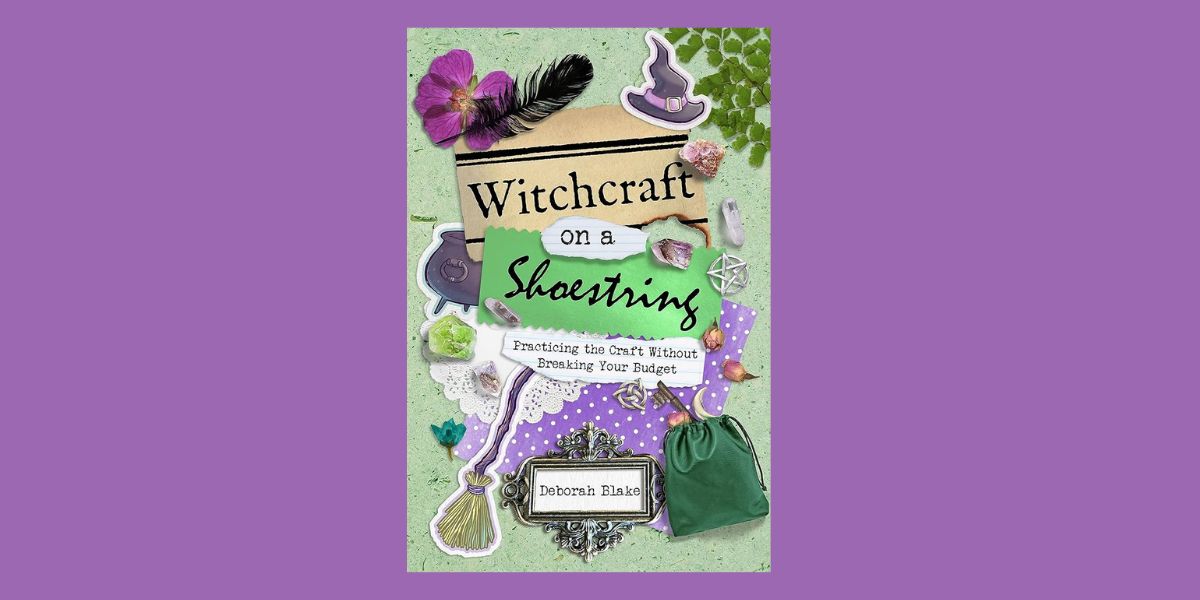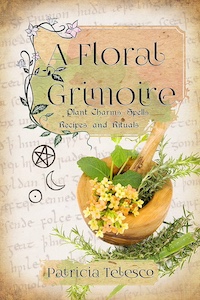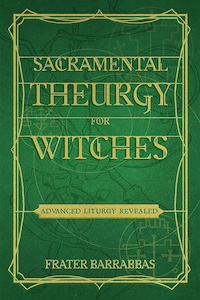
Dance of the Sun Goddess: Pagan Folkways of the Baltic Coast, by Kenneth Johnson
Crossed Crow Books, 1959883240, 220 pages, March 2024
The eastern shores of the Baltic Sea glitter with amber, the golden tears of petrified resin shed by prehistoric pines. Nicknamed the Amber Coast, this magical region was the last part of Europe to be converted to Christianity, and forgotten pagan traditions, preserved in the lullabies of folk songs, rock its gilded cradle.
In Dance of the Sun Goddess: Pagan Folkways of the Baltic Coast, author Kenneth Johnson introduces readers to a vivacious pantheon of Baltic deities whose powers can be invoked with sacred trees and beautiful sigils that may be painted or carved on wood. Johnson draws pagan lore from Baltic folk songs to reconstruct the pre-Christian beliefs of the Latvians and Lithuanians.
Johnson is a professional astrologer who has a B.A. in Comparative Religions and an M.A. in Eastern Studies, and he has written several books paganism, astrology, and magic, including Jaguar Wisdom: An Introduction to the Mayan Calendar, Witchcraft and the Shamanic Journey, and Flight of the Firebird: Slavic Magical Wisdom and Lore.
While Johnson is not of Baltic descent, he is passionate about sharing the mythology and folk practices of the Amber Coast with the world because of what they reveal to us about authentic European paganism. In the “Author’s Note” at the beginning of the book, he explains that the Lithuanian language is the closest living relative to the ancient Proto-Indo-European language.
“This original language had its own religion, and this vanished faith has been the origin of all our Pagan mythologies—Greek, Latin, Norse, Celtic, Slavic, and Baltic,”1 Johnson says. Like a prehistoric insect fossilized in an amber coffin, these root pagan beliefs have been preserved in the living language and active folk practices of the Baltic lands, giving us a rare glimpse into the past.
In “Part I: The World Tree,” Johnson introduces readers to the Baltic vision of the cosmos. Heathen readers will be delighted to learn that Baltic paganism bears many striking similarities to Norse mythology, beginning with the Latvian World Tree, called the “Tree of Dawn,” which resembles the Nordic Yggdrasil.2 The Tree of Dawn is invisible to mortal eyes. It is a bridge between heaven and earth, and only the gods and Baltic shamans can see it. In a Latvian folk song Johnson shares, the Tree of Dawn is poetically described as an iridescent rose that lifts one to heaven upon its ascending petals. This multi-colored rose may remind readers of Bifröst, the shimmering Rainbow Bridge that leads to Asgard, the realm of the gods, in Norse mythology.
Parts II and III introduce readers to the Baltic pantheon of deities, nature spirits, and folk heroes. As indicated by the book’s title, Dance of the Sun Goddess, the Baltic deity of the sun is the life-giving goddess named Saulė, while Mėnuo is the god of the moon. Saulė is one of the most important deities in the Baltic pantheon, since she sustains all life on this planet. The magical amber that sparkles on the Baltic shores is a gift of the sun goddess, and in the Bronze Age, it was the Baltic equivalent of gold, bringing prosperity through trade. Other prominent deities include Dievas, the Sky Father; Perkūnas, the god of thunder, who resembles the Norse god Thor; Velnias, the Lord of the Underworld; Žemyna, the earth goddess; and Laima, the goddess of Fate.
In the Baltic worldview, the gods are intimately associated with trees.
“Too often, we walk past a magnificent tree without even looking up from our cell phones, unaware that we are in the presence of Laima, whose sacred tree is a linden, or Perkūnas, whose tree is the stately oak,” says Johnson.3
Throughout the book, Johnson includes several magical workings that help keep readers mindful of the divinity in nature. For example, as a magical working for honoring Milda, the goddess of love and indolence, in the month of May, Johnson suggests readers “take a vacation from work and relax among the flowers and the trees as her contemporary devotees do.”4
An appendix at the end of the book provides nineteen Baltic sigils and guidance on how to use them to invoke the blessings of the gods. One of these beautiful sigils is Perkūnas’s “Cross of Thunder,”5 which protects one’s home and family, and may be carved or painted on the door of a house or barn.
Most of these deities were unfamiliar to me, so it was a real treat to learn a new pantheon. One of my favorite Baltic goddesses is now Medeina, a beautiful forest maiden with green hair who is the Lithuanian version of Artemis/Diana. Like her Greco-Roman counterpart, she is a chaste huntress who haunts the wilderness, accompanied by an entourage of hares and wolves, her most sacred animals. Even though she is a huntress, it is the animals she protects, not human hunters, and sometimes she shapeshifts into a wolf to defend her pack. Her Latvian name is Meža Māte,”the Mother of the Forest.”6
I have a preference for chthonic deities, so I found the Baltic Underworld to be particularly fascinating. It is ruled by the Lithuanian deity Velnias, whose name is etymologically derived from the word vele, meaning “the dead,”7 and “his world is the world which lies in the tangled roots of the great tree, the world of darkness and the dead.”8 According to Johnson, the Underworld mirrors our realm. “It even has its own World Mountain, Mt. Anapils, and this is where Velnias dwells, just as Dievas dwells upon Sky Mountain in the world above the great tree,”9 Johnson says.
Although the Christians associated Velnias with the Devil, his role in Baltic mythology was far more complex. “Velnias is a world maker,”10 Johnson says. The creation of the world was a joint effort by the Sky Father Dievas and the Underworld Lord Velnias, “the two opposite polarities of life and death working together.”11 However, Dievas plays a passive role, and his will is carried out by his son Perkūnas, the temperamental Thunder God, who sometimes lashes out at Velnias when they don’t see eye to eye. Velnias escapes the wrath of Perkūnas by slinking in the shadows and hiding beneath stones or in the hollows of trees.
Being a shapeshifter, Velnias is a master of beasts, and since humans may reincarnate as animals, he is also lord of the dead who have been reborn in bestial form. I was particularly fascinated by this aspect of his character because it reminds me of the Devil card in tarot, and the bestial nature of both the Devil and Adam and Eve, who are depicted with tails. I was aware that shapeshifting can be a metaphor for dying in fairy tales, but it didn’t occur to me to link the Devil with humans reincarnating as beasts until I read about Velnias.
Ragana, the goddess of witches, is the Baltic Baba Yaga. Just as Velnias diametrically opposes the Sky Father, the winter goddess Ragana is the counterbalance to the celestial fire of Saulė, who must be banished on the summer solstice so that her life-giving powers do not overwhelm the earth with greenery and sweltering heat. Likewise, Saulė must regain her strength to break the dark spell of winter that binds the earth in chains of ice. At the winter solstice, Velnias leads an army of the dead and conquers the forces of darkness so that Saulė can return to thaw the frozen land. This divine tug of war between the forces of light and darkness spins the wheel of the year.
In the chapter on “Nature Spirits,” one of the most intriguing Lithuanian fairies is the aitvaras, a house spirit that looks like a rooster with a fiery tail when it is inside the house, and takes the form of a dragon or a meteorite when it streaks the countryside, stealing grain and gold for its master.12 While the aitvaras is a source of prosperity for the household, it can also bring misfortune if the theft is exposed.
In “Part IV: The Wheel of Life,” Johnson guides readers through the Baltic wheel of the year, the seasonal festivals, and the Old Prussian zodiac. I was fascinated to learn that Cancer, the sign of the Crab in Western astrology, is called Azē, meaning “The Goat” in Prussian, and takes on the qualities of Capricorn, the Sea-goat, the opposite sign of Cancer, because “this is the time when Saulė has reached her fullness and is turned back upon her course by Ragana the Witch Goddess.”13
According to Lithuanian folklore, every person has a star in the heavens that appears when they are born and watches over them like a guardian angel. When they die, that star guides them through the Otherworld. In other star lore, the Big Dipper is “The Wagon of Perkūnas”14 and Polaris is his goat.
The deities and spirits I have shared here are just a sampling of the rich and vibrant pantheon of the Amber Coast, and any lover of mythology will relish in the pages of this book. The detailed descriptions of festivals and sigils will also enable readers to incorporate Baltic traditions and magical workings into their personal pagan practices as they celebrate the eternal Dance of the Sun Goddess.

Rachel Christina McConnell is a witch, tarot reader, intuitive astrologer, and writing spider. She holds an MFA in Fiction from Columbia University in the City of New York. Her short stories have appeared in Dark Moon Lilith Press and Minerva Rising Press’s The Keeping Room. Links to her publications are available here: https://rachelchristinamcconnell.wordpress.com













